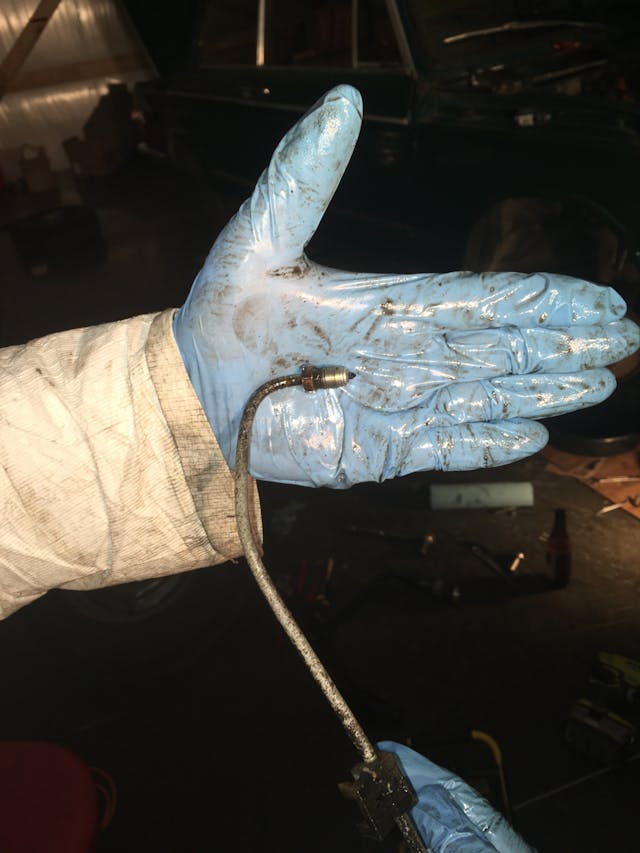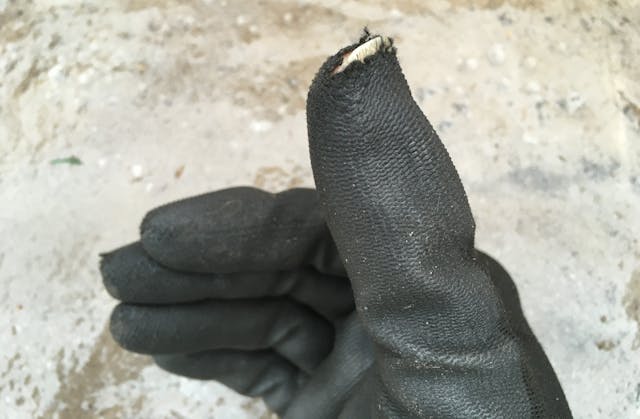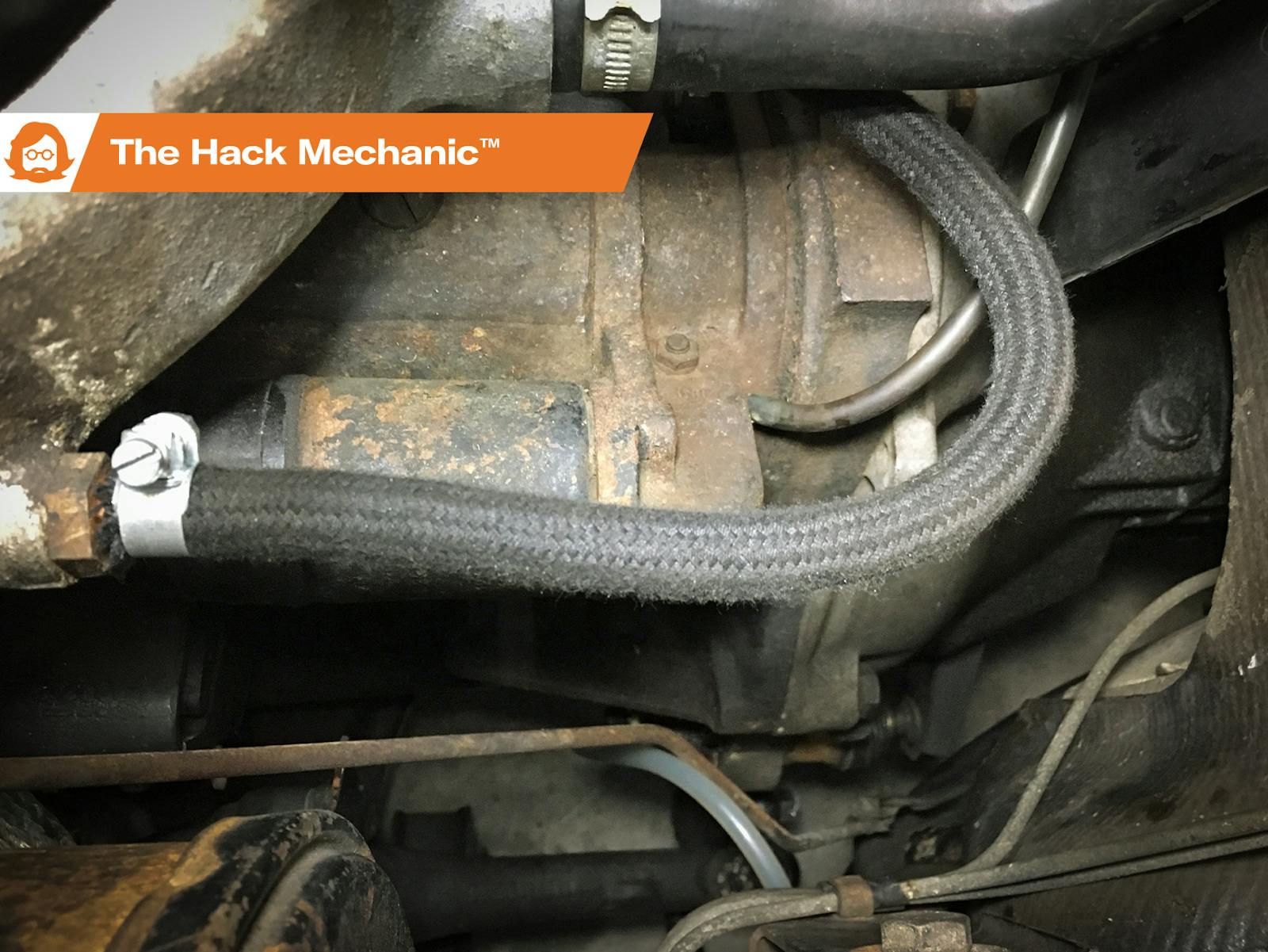When it comes to protecting your hands, do your work gloves actually work?

After all that epic stuff the last few weeks about buying/not buying Lotuses, then learning that I’m losing my five rented storage spaces, this week we’re going to talk about something more simple.
Gloves.
For decades, I was a bare-handed do-it-yourselfer. I plunged my unsheathed skin into just about anything. The perpetual dirt on my hands and grease under my fingernails didn’t bother me in the least. It’d come off with an application of Gojo or other hand cleaner. Besides, what was the alternative? Latex gloves tore if you even looked at them with a rough thought in your mind, and gasoline basically melted them. And those dedicated “mechanics gloves” didn’t offer me the tactile feel or the dexterity necessary to spin a 10mm nut onto a bolt.
At some point in the past 10 years, however, that changed. I’m not sure there was any single event. It’s not like I sliced up my hand or anything. It was likely during the long resurrection of my 1974 Lotus Europa Twin Cam Special when I so effectively applied my “do one thing a night, even if that one thing is just removing a nut and a bolt that hold in the alternator” rule. On a vintage car, it’s amazing how greasy your hands can get just by taking five minutes and laying them on two fasteners.
It was in this way that I came to the disposable blue 3-mil thick nitrile gloves that are ubiquitous in the health and food service industries. A bit tougher than latex and way more gasoline-resistant, they’re available just about anywhere—hardware, auto parts stores, CVS—and can be dirt-cheap if you buy them in bulk from a commercial food supply store. Slip ’em on and greasy hands be gone. No more 10 minutes of washing for five minutes of hands-on work. And for tasks like brushing on icky stuff like Permatex Aviation Form-A-Gasket, they’re absolutely essential.

There are five issues with 3-mil nitrile gloves. The first is that, even though they’re more tear-resistant than latex, that’s not saying much. If you’re doing hands-on mechanic work, shoving around transmissions and replacing exhausts and the like, they rip pretty quickly. If the goal really is keeping my hands clean, I’ll go through several pairs in a work session.
The second issue is that they offer essentially zero injury protection. If a jagged corner of a bolt or an exhaust catches the glove and tears it, it’s likely to do the same to your skin underneath it.
The third is that, like any rubber glove, there’s absolutely no ventilation, so when you use them in summer, your hands sweat like mad, and they take on an unappealing white bloated look when you peel the gloves off.
The fourth issue is that, although nitrile gloves are more robust with regard to gasoline than latex, they’re really not heavy enough if you’re cleaning parts with solvent and a brush, because of both the thinness of the gloves and the possibility of them tearing. If you’re actually sticking your hands in running solvent such as while using a parts washer, be sure to use thick gloves that are actually rated for the application.
Lastly, because (I assume) of the increased demand for them during COVID, the shelf price of 3 mm blue nitrile gloves used in heath services has risen at many retail outlets. The last time I went into Autozone, they were $35 for a box of 100.
During the past two years, I’ve found two additional types of gloves that have made me all but ditch the 3 mm nitrile gloves. I’ve included links to Amazon for convenience, but—to be clear—I have no relationship with Amazon and receive no kickbacks.
Unpadded Palm-Coated Gloves
Last winter, before I settled into a list of projects that included a clutch replacement, I thought I’d try something heavier than the thin blue nitrile gloves. There are pages and pages on Amazon of so-called mechanics gloves. These seemed to roughly divide into padded gloves versus unpadded ones with an oil-resistant coating on the fingers and palms. Fatigued by looking at options, I simply bought something inexpensive that was labeled as Amazon’s choice.
I was pleasantly surprised by the “Liberty P-Grip Ultra-Thin Polyurethane Palm Coated Gloves with 13-Gauge Nylon/Polyester Shell, Medium, Black.” For $14, you get a dozen pairs. I think they’re very good for the price. The “13-gauge” part is a bit misleading because it’s not the thickness of the palm and finger coating. Instead, it’s the “yarn gauge.” The higher the gauge, the thinner and the more dexterous the glove. I don’t see any spec for the thickness of the coating. But whatever it is, it strikes a very nice balance between protection and nimbleness. The gloves are slightly stretchy and have an elastic band around the wrist. If you buy the right size, they’re a good snug high dexterity fit.

The big plusses of the gloves are that they’re rugged enough to use for general mechanical work yet thin enough that they only affect dexterity when you’re doing the finest of tasks. They do offer a decent measure of hand protection. They don’t rip at the drop of a hat like nitril (though my guitarist’s thumbnail does eventually wear the top of the thumb out from the inside). Unlike nitrile, they’re breathable, so your hands don’t marinate in their own sweat. And they’re inexpensive enough to keep a pair in the trunk of each of the cars, as well as to treat them as disposable when the woven sections become too disgusting (below).

The main minus is that they are not sealed gloves. The urethane is a coating on the palms and fingers on top of the woven nylon/polyester shell, so using them in the parts washer or for other serious parts cleaning is out of the question, as gas, brake cleaner, or other solvents will quickly find their way through the non-coated areas and onto your skin. Further, if you get the non-coated portion of the gloves soaked with some non-solvent like oil, antifreeze, or brake fluid that won’t evaporate, the moisture wicks up the weave and gets inside the palm and fingers, and they always feel slimy inside after that. Fortunately, at about a dollar a pair, I’m not hesitant to throw them out. The other negative is that they’re not padded and thus aren’t the best choice if you’re moving a lot of heavy, rough-edged objects like transmissions.
6 Mil Heavy Duty Nitrile Gloves
These are exactly what they sound like—thicker versions of the standard disposable 3 mil nitrile gloves. I happened onto them by accident. I was about to reattach the bellhousing to the Lotus’ transaxle. This requires coating a decent-sized paper gasket with Permatex Aviation Form-A-Gasket. I found I’d run out of the 3 mil nitrile gloves that I routinely sheathe my hands with when laying on the sticky brown Permatex. I went to the local Autozone, balked at the $35 cost for a box of 100, tried the $5 pack of 12 “Venom Steel Rip-Resistant Industrial Gloves,” and instantly liked them.

As with other gloves, there are pages and pages of 6-mil nitrile gloves on Amazon, including ones with a textured grip, for as low as $23 for a box of 100. The Venom Steel-brand gloves, however, are two-layer. I haven’t done a hand-to-hand comparison against single-layer 6-mil gloves, but these Venom gloves are pretty stout and have survived multiple wrenching sessions. I liked them so much that I immediately jumped on Amazon, saw their solid five-star customer rating, found a box of 50 for $11.35 (making them about the same price as generic 6-mil gloves), and ordered them. That vendor, however, appears to be sold out.
I still will occasionally wrench bare-handed. Sometimes I like feeling the steel of the ratchet handle in my hand. But I generally do prefer having a barrier between my aging hands and jagged greasy nastiness. The main take-away message here is that a 6 mil nitrile glove will be more rip-resistant than the common blue 3 mil ones, and that there are thin-coated woven gloves that offer very good dexterity. You will still, however, need the thick rubbery looks-like-you-could-handle-uranium gloves if you’re actually submersing your hands in the parts cleaner, and you’ll still probably want conventional padded work gloves if you’re routinely working around jagged metal.
Show your hands some glove.
***
Rob Siegel’s new book, The Best of the Hack MechanicTM: 35 years of hacks, kluges, and assorted automotive mayhem, is available on Amazon. His other seven books are available here, or you can order personally-inscribed copies through his website, www.robsiegel.com.

